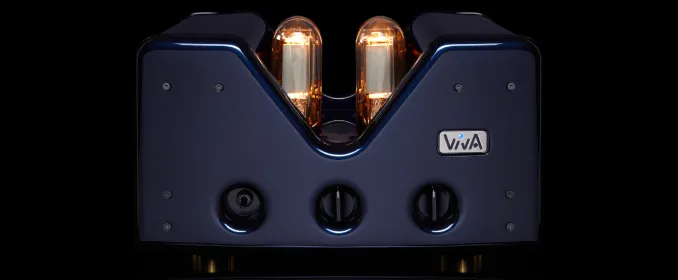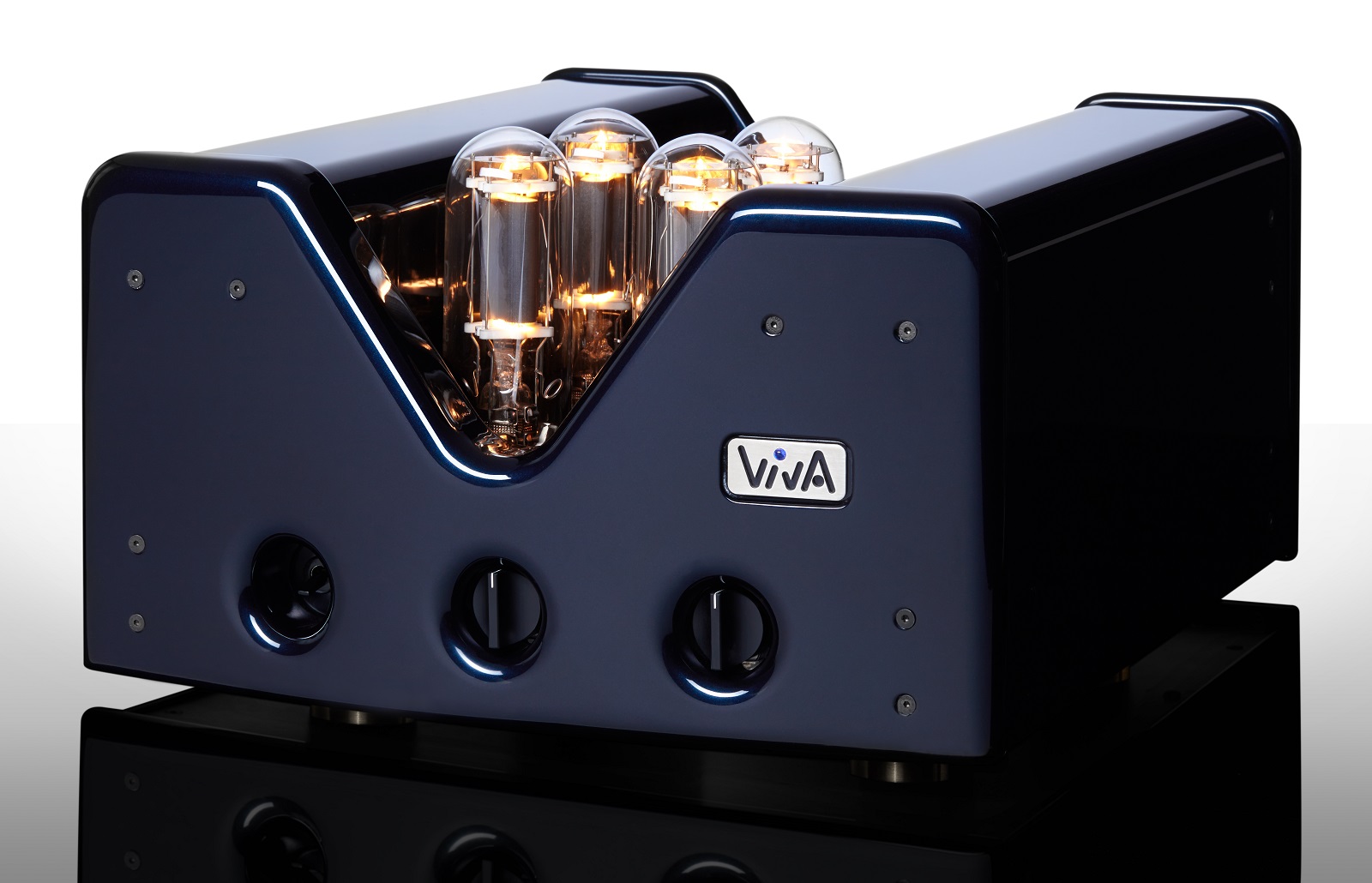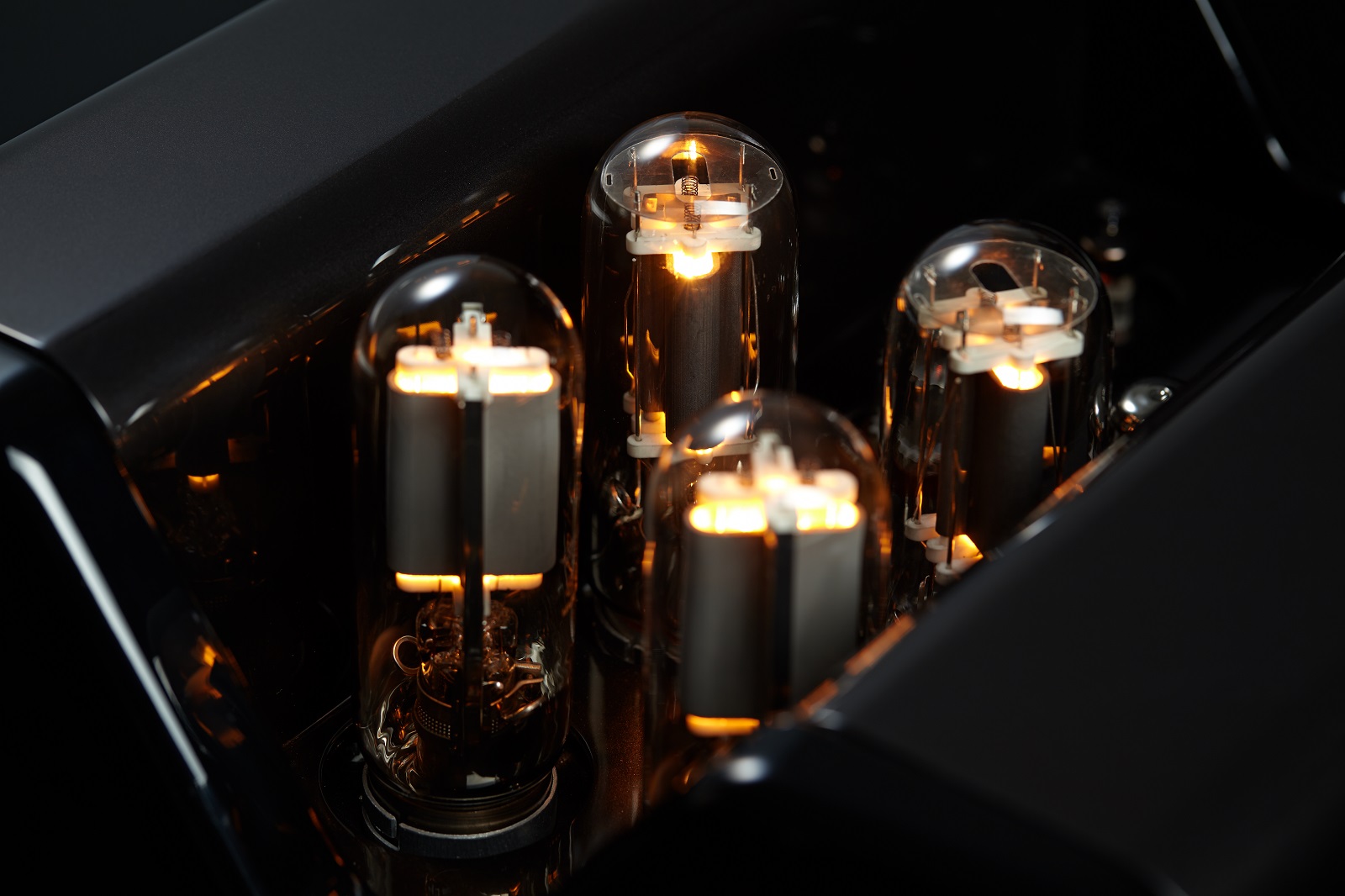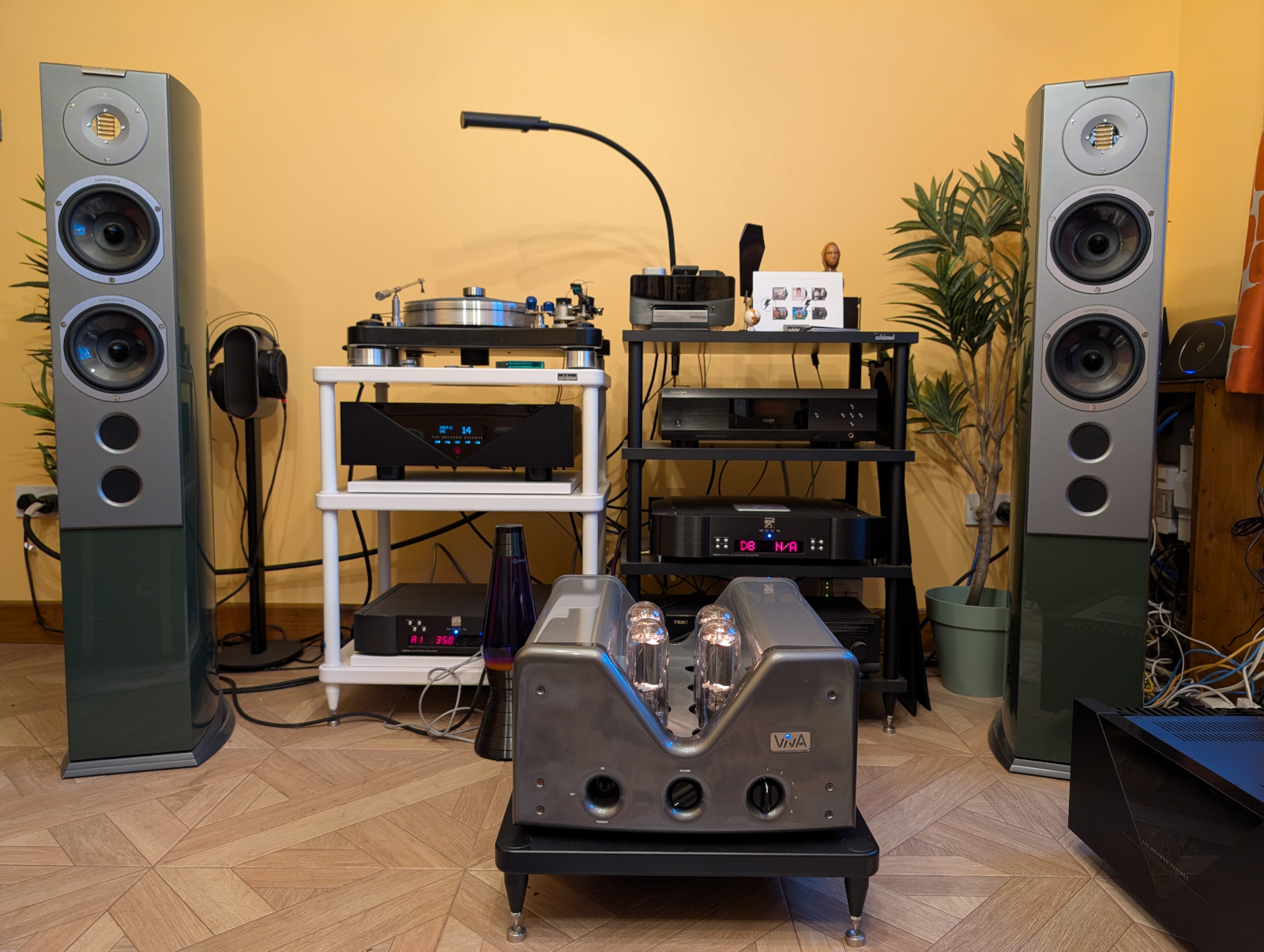Viva Audio Solista MkIII Integrated Amplifier Review

Jay Garrett celebrates the sound of this exquisite single-ended triode tube amplifier…

Viva Audio hails from the Italian town of Camisano, Veneto, about thirty minutes north of Padua. The company was started by brothers Amadeo (pictured above) and Giampietro Schembri in the mid-nineties and now offers a range of electronics, including power amps, preamplifiers, DACs, and horn loudspeakers—all of which are handmade. The Solista MkIII is one of three lavish, high-end integrated amplifier designs that Viva makes alongside the Solistino and Classico.
The Solista MkIII is a full Class A single-ended triode design running four massive 845 tubes; the front pair acts as hybrid rectification power supplies, and the rears do output duties. The manufacturer says Psvane tubes were selected for their sound quality and linearity, which let this amplifier drive difficult speaker loads despite its modest 22W RMS per channel quoted power output.

The Psvane tubes are partnered by a pair of 6C45i triodes and a brace of Tung-Sol 6SN7GTs covering input and driver duties, respectively. Happily, there is no negative feedback employed in the point-to-point copper-wired Solista. The chunky transformer is copper-wired around an in-house core, contributing to this amplifier's not-inconsiderable 35kg weight.

This amplifier is an old-school design with no digital and/or wireless connectivity. Nor is there a headphone output or a phono stage – although Viva does offer the Numerico DAC, the Fono and F1 phono preamps, and a trio of Egoista headphone amplifiers to fill those particular gaps. Four RCA line inputs are fitted alongside a direct preamp, effectively turning the Solista MkIII into a power amp. By the way, Amadeo Schembri sees no benefit from balanced inputs in the design of these amplifiers. Round the back, you'll find lovely palladium-plated copper loudspeaker binding posts.

Overall fit and finish are superlative, as you'd expect from a premium Italian hi-fi product. The handsome front panel sports a distinctive V-shaped cut-out in the middle, with the fascia offering a main power switch with a 'warm up' setting and volume and source selectors. Alternatively, you can use the Solista MkIII's pleasingly weighty remote control. This chunky black aluminium slab feels nice in the hand, like the luxurious piece of equipment it is. It's also highly intuitive to use, thanks to only having two buttons. Having remote volume is handy, but it's odd that source selection isn't included.

For the purposes of my review, I paired the big Viva with my reference Audiovector R 6 Arrete loudspeakers. I also tried it out as a power amp fed by my Gryphon Essence preamplifier using its RCA tape line-level outputs.
THE LISTENING
The Solista MkIII is definitive proof that valve amplifiers need not sound soft, soggy, and sugary—in fact, it is quite the reverse, having swapped out its smoking jacket for a shacket. This big Italian amp has more in common with a great solid-state design to my ears, as it's direct, punchy, and visceral—more Negroni than Barolo. Despite its modest power output, it's open and dynamic with real impact.

While I was told that the Solista can drive troublesome speaker loads, I wasn't prepared for the amount of grip and control it exerted over my Audiovector floorstanders. Bass was solid and bristling with texture, investing Your Secrets by Ranji, Ghost Rider & Reality Test with presence and drive. Vocals, piano and synths had plenty of space within the recorded acoustic, and rhythmically, it was a blast. This amplifier is also happy to groove along less frenetically, allowing the plaintive bluesy stylings of Jesper Munk acres of space to get his point across in Takes Two. Here, it was the tactile tones of the bass guitar that took the limelight for me, while the percussive effects highlighted the width of the soundstage in this quite intimate recording. The wash of reverb helped to throw things far out beyond the confines of the loudspeakers.

Its superb instrumental timbre and vocal texture were ably demonstrated with Cara Dillon's False, False. This delightful slice of contemporary Celtic folk combines fiddle work, double bass, piano and vocals. It showed this amplifier's gentle touch; when called upon so to do, it can sound soft and warm. It may not be as rose-tinted as some other tube designs I've heard, but there was a delightful aura to this recording that I hadn't noticed through my Gryphon pre/power duo. As you'd expect from a single-ended triode tube amp, treble is almost supernaturally sweet – yet it still has sufficient bite when required. The airy openness up top aids and abets the highly transparent midband, and the sound loses nothing of its beauty at lower listening levels.

At no point does the Viva behave like a 22-watt amplifier, or feel like it lacks headroom. In my listening room, the volume dial rarely ventured much past the 9 o'clock position for normal listening volumes. Loudspeaker matching is always something you need to be mindful about with a tube amplifier, but the Solista MkIII showed little fear playing Mussorgsky's A Night on the Bare Mountain performed by Orchestre Symphonique de Montréal under Kent Nagano. I was able to dial in enough level to make unsuspecting listeners jump on dynamic crescendos. Not only is this integrated amp gutsy, but it is also lightning-fast, too – another facet of a great tube amp. It absolutely exudes energy and underlines this by the uncanny silence between musical notes – in my system, at least, this amp displays vanishingly low noise.

The most joyous aspect of a properly designed tube amplifier is, of course, its midband, and single-ended triode designs are arguably the cream of the crop in this region. The Solista MkIII proves precisely this, serving up a magic midband that oozes a vibrant, organic tonality – especially with voices and stringed acoustic instruments. Where it does break with tradition is that the usual layer of varnish, which adds euphonic colour in many tube amps, is conspicuous by its absence. Its midrange has great focus, resolution and transparency, letting the music flow freely and without a hint of solid-state-style grain.

THE VERDICT
 Viva Audio's Solista MkIII has a physical presence that matches its confidence. While some other integrateds throw in more connectivity options, a DAC and a fancy OLED display, this practices the 'less is more' philosophy which translates to a supremely enjoyable audio performance. It won't suit traditional tube buyers who crave euphonic warmth, but well-heeled music lovers should form an orderly queue.
Viva Audio's Solista MkIII has a physical presence that matches its confidence. While some other integrateds throw in more connectivity options, a DAC and a fancy OLED display, this practices the 'less is more' philosophy which translates to a supremely enjoyable audio performance. It won't suit traditional tube buyers who crave euphonic warmth, but well-heeled music lovers should form an orderly queue.
To my ears, in sonic terms, it offers the best of both worlds – with (much of) the power and speed of great solid-state, plus a delightfully natural and organic music-making style that's the hallmark of quality tube amps. Added to this is the faultless build quality and finish. The bonus of a short warm-up time and not having to carefully pair it with valve-friendly speakers makes the amplifier easier to live with than many tube designs, too. As such, if you're looking for a premium-priced, state-of-the-art integrated amplifier, then this is an essential audition.
Visit Viva Audio for more information
Jay Garrett
StereoNET’s resident rock star, bass player, and gadget junkie. Jay heads up StereoNET as Editor for the United Kingdom and Europe regions. His passion for gadgets and Hi-Fi is second only to being a touring musician.
Posted in: Amplifiers | Integrated Amplifier | Applause Awards | 2025 | Hi-Fi | StereoLUX!
JOIN IN THE DISCUSSION
Want to share your opinion or get advice from other enthusiasts? Then head into the Message
Forums where thousands of other enthusiasts are communicating on a daily basis.
CLICK HERE FOR FREE MEMBERSHIP
Trending
applause awards
Each time StereoNET reviews a product, it is considered for an Applause Award. Winning one marks it out as a design of great quality and distinction – a special product in its class, on the grounds of either performance, value for money, or usually both.
Applause Awards are personally issued by StereoNET’s global Editor-in-Chief, David Price – who has over three decades of experience reviewing hi-fi products at the highest level – after consulting with our senior editorial team. They are not automatically given with all reviews, nor can manufacturers purchase them.
The StereoNET editorial team includes some of the world’s most experienced and respected hi-fi journalists with a vast wealth of knowledge. Some have edited popular English language hi-fi magazines, and others have been senior contributors to famous audio journals stretching back to the late 1970s. And we also employ professional IT and home theatre specialists who work at the cutting edge of today’s technology.
We believe that no other online hi-fi and home cinema resource offers such expert knowledge, so when StereoNET gives an Applause Award, it is a trustworthy hallmark of quality. Receiving such an award is the prerequisite to becoming eligible for our annual Product of the Year awards, awarded only to the finest designs in their respective categories. Buyers of hi-fi, home cinema, and headphones can be sure that a StereoNET Applause Award winner is worthy of your most serious attention.


















